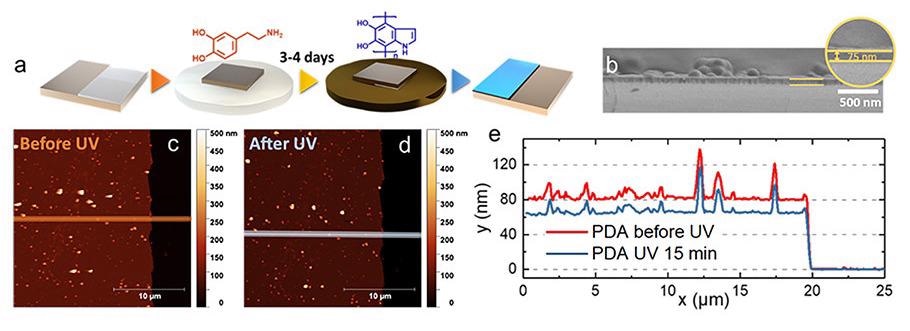Nov 27 2020
The high refractive index (RI) and broadband absorption capacity of melanin contribute to the pigment’s potential to safeguard against ultraviolet radiation (UV).

Image Credit: University of Akron
Moreover, such optical properties contribute to the lively structural colors observed in birds and several other plants and animals.
Scientists consider that exposure to UV light impacts the RI and absorption because melanin experiences chemical structural variations upon exposure to UV light. However, it is still not clear exactly what kinds of changes occur.
To offer a better understanding, Weiyao Li and colleagues quantified the RI and variations in absorption of synthetic thin films of melanin exposed to a wide spectral range, from UV to near-infrared waves (360–1700 nm).
The researchers noted that both the RI and absorption coefficient considerably increased following exposure to UV, particularly near 400 nm. The results indicate that the protective function of melanin is improved following intense UV exposure.
The researchers generalized the study against the huge class of melanin pigments by using two kinds of synthetic melanin: polydopamine and a more natural version known as poly(dopamine–L-DOPA).
Although the L-DOPA-based films had slightly higher reflective indices after UV light exposure, the consistency of the RI and absorption coefficient changes observed after exposure in both films was the most prominent finding, and we observed these changes through accurate measurements of refractive indices for the first time.
Dr Ali Dhinojwala, Study Author and Interim Director, School of Polymer Science and Polymer Engineering, University of Akron
Dr. Dhinojwala is also H.A. Morton, Professor of polymer science.
The study’s applications include better insights into the photoprotective behavior of natural melanin and the structural colors in plants and animals, together with the chance of developing synthetic melanin materials for the most sophisticated UV protection. The team plans to examine other melanin chemistries using the same method.
Journal Reference:
Li, W., et al. (2020) Characterization of broadband complex refractive index of synthetic melanin coatings and their changes after ultraviolet irradiation. Applied Physics Letters. doi.org/10.1063/5.0024229.